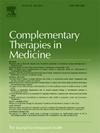Assessment of quality of reporting and methodology in systematic reviews of moxibustion for chronic diseases using PRISMA 2020 and AMSTAR 2
IF 3.5
3区 医学
Q1 INTEGRATIVE & COMPLEMENTARY MEDICINE
引用次数: 0
Abstract
Background
Moxibustion is a simple and low-cost technique for chronic diseases. This study aimed to evaluate the quality of reports and methodologies of systematic reviews (SRs) related to the treatment of chronic diseases with moxibustion.
Methods
Six databases were searched to identify moxibustion SRs for the treatment of chronic diseases. The reporting and methodological quality were evaluated based on the PRISMA 2020 statement and AMSTAR 2 standard, respectively. Univariate and multivariate analyses were used to explore impact factors.
Results
A total of 200 SRs were included. The median reporting quality score based on the PRISMA 2020 evaluation was 58.33. The incomplete reports involved search strategies, assumptions about missing information, and methods to synthesize and display results. The median methodological quality score of AMSTAR 2 was 40.63. The substandard methodologies included lack of a prespecified protocol, analyses for impacts of the risk of bias, and reports of funding sources. The characteristics of SRs with higher PRISMA 2020 and AMSTAR 2 scores mainly included funding support, English publications, protocol registration, application of PRISMA guidelines, and conduct of GRADE evaluation.
Conclusion
Over time, the reporting quality of SRs of moxibustion for chronic diseases has generally improved, but the methodological quality remains unsatisfactory. Conducting a GRADE evidence quality evaluation is crucial for improving the reporting and methodological quality. In the future, it is necessary for both PRISMA 2020 and AMSATR 2 to develop specific extensions for moxibustion to better guide the reporting and methodology of moxibustion SRs.
Study registration
PROSPERO ID CRD42020149024
使用PRISMA 2020和AMSTAR 2评估慢性疾病艾灸系统评价的报告质量和方法
艾灸是治疗慢性疾病的一种简单、低成本的方法。本研究旨在评价与艾灸治疗慢性疾病相关的系统评价(SRs)报告的质量和方法。方法对6个数据库进行检索,以确定艾灸治疗慢性疾病的疗效。报告质量和方法学质量分别根据PRISMA 2020声明和AMSTAR 2标准进行评估。采用单因素和多因素分析探讨影响因素。结果共纳入200例SRs。基于PRISMA 2020评估的报告质量得分中位数为58.33。不完整的报告涉及搜索策略、关于缺失信息的假设以及综合和显示结果的方法。AMSTAR 2的方法学质量评分中位数为40.63。不合格的方法包括缺乏预先规定的方案,对偏见风险影响的分析,以及资金来源的报告。PRISMA 2020和AMSTAR 2得分较高的研究中心的特点主要包括资金支持、英文出版物、方案注册、PRISMA指南的应用和GRADE评价。结论随着时间的推移,艾灸治疗慢性病的SRs报告质量普遍提高,但方法学质量仍不理想。开展GRADE证据质量评价对于提高报告质量和方法质量至关重要。未来,PRISMA 2020和AMSATR 2都有必要为艾灸制定具体的扩展,以更好地指导艾灸SRs的报告和方法。研究注册号prospero ID CRD42020149024
本文章由计算机程序翻译,如有差异,请以英文原文为准。
求助全文
约1分钟内获得全文
求助全文
来源期刊

Complementary therapies in medicine
医学-全科医学与补充医学
CiteScore
8.60
自引率
2.80%
发文量
101
审稿时长
112 days
期刊介绍:
Complementary Therapies in Medicine is an international, peer-reviewed journal that has considerable appeal to anyone who seeks objective and critical information on complementary therapies or who wishes to deepen their understanding of these approaches. It will be of particular interest to healthcare practitioners including family practitioners, complementary therapists, nurses, and physiotherapists; to academics including social scientists and CAM researchers; to healthcare managers; and to patients. Complementary Therapies in Medicine aims to publish valid, relevant and rigorous research and serious discussion articles with the main purpose of improving healthcare.
 求助内容:
求助内容: 应助结果提醒方式:
应助结果提醒方式:


